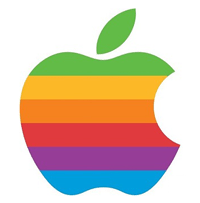Eleven months before the U.S. declared war on Japan, President Franklin D. Roosevelt said “As men do not live by bread alone, they do not fight by armaments alone.” He articulated four fundamental freedoms that everyone in the world ought to enjoy:
- Freedom of speech.
- Freedom of worship.
- Freedom from want.
- Freedom from fear.
Fast forward 72 years: technology has advanced at dizzying rates and permeated every aspect of our lives, from how we are born to how we die and everything in between. In this co-evolution of society and technology, what it means to be truly “free” is no longer about just the country we live in, or even its laws, but is shaped by the products we live on.
As Marc Andreessen says, software is eating the world. It’s a creative gale of destruction that irreversibly changes every industry it touches, and if you don’t control the software, the software controls you. It mediates how and with whom you communicate, what news you see, and what other software you’re able to run. It influences the very way your brain works, as you process the creative gale of distraction that interrupts us all hundreds of times each day. With every ping, software burrows deeper into our lives.
In the early nineties, a prescient hacker named Richard Stallman — working at MIT, where today’s future had already happened — recognized this shift. He proposed a set of four freedoms that were fundamental for software in an enlightened, tech-dependent society.
- The freedom to run the program, for any purpose.
- The freedom to study how the program works, and change it so it does your computing as you wish.
- The freedom to redistribute copies so you can help your neighbor.
- The freedom to distribute copies of your modified versions, giving the community a chance to benefit from your changes.
(Aside: I originally thought Stallman started counting with zero instead of one because he’s a geek. He is, but that wasn’t the reason. Freedoms one, two, and three came first, but later he wanted to add something to supercede all of them. So: freedom zero. The geekness is a happy accident.)
This is our Bill of Rights. Stallman called it Free Software. The “free” doesn’t have to do with price, as you’re still free to charge for your software, but with freedom to create. Or as we geeks often say: not free as in beer, free as in speech.
People are scared of free software, and I understand why. You’re taking the most valuable thing you have, your intellectual property, and granting the freedom you enjoy as a creator to anyone who downloads your work. It’s terrifying, actually. It’s releasing your ideas, and letting anyone build on them — in a way that might be better than your own work. It’s releasing your traditional understanding of ownership, and your fear of being out-developed.
The most experienced entrepreneurs can cling to the concept that your idea is something precious that must be protected from the world, and meted out in a controlled way. Lots of us hang on to the assumption that scarcity creates a proprietary advantage. It’s how many non-tech markets work.
Open source abdicates your flexibility as a developer to better serve the people who actually use your products. You can see that as a constraint… or you can see it as a door to iteration, innovation, and constant progress.
I’ve spent a third of my life building software based on Stallman’s four freedoms, and I’ve been astonished by the results. WordPress wouldn’t be here if it weren’t for those freedoms, and it couldn’t have evolved the way it has.
WordPress was based on a program called B2/cafelog that predated it by two years. I was using B2 because it had freedoms 0 and 1: I could use it for whatever I wanted, including my zero-budget personal blog, and the source code was open. It was elegant and easy to understand, and anyone could tweak it.
B2 was ultimately abandoned by its creator. If I’d been using it under a proprietary license, that would have been the end — for me, and all its other users. But because we had freedoms 2 and 3, Mike Little and I were able to use the software as a foundation, giving us a two-year headstart over building something from scratch, and realize our own vision of what blogging could be.
We were just consumers of the software, volunteers in the forums, and occasional contributors to the codebase, but because (of the GPL) we had the freedom to build on B2, we were able to continue development as if it had been our own creation.
Ten years later, those freedoms are still embedded in every copy of WordPress downloaded, including the 9.2 million downloaded in the past month or so since our 3.8 release.
I believe that software, and in fact entire companies, should be run in a way that assumes that the sum of the talent of people outside your walls is greater than the sum of the few you have inside. None of us are as smart as all of us. Given the right environment — one that leverages the marginal cost of distributing software and ideas — independent actors can work toward something that benefits them, while also increasing the capability of the entire community.
This is where open source gets really interesting: it’s not just about the legal wonkery around software licensing, but what effect open sourced software has on people using it. In the proprietary world, those people are typically called “users,” a strange term that connotes dependence and addiction. In the open source world, they’re more rightly called a community.
The core features of WordPress aren’t rocket surgery. A handful of smart people in a room for a year could create a reasonable approximation of the software, and undoubtably improve some things — I see other startups do this three or four times a year.
What they miss is that WordPress isn’t a checklist of features. It’s over 29,000 plugins created by the community, from the in-demand things like SEO to niche features like using your 404 page to help adopt homeless dogs in Sweden. Every WordPress site looks different, because of the thousands of themes available. Instead of one event to outdo, there are more than 70 volunteer-organized WordCamps on six continents (and there’ll be more in 2014).
WordPress marketing has nothing to do with its website or logo, it’s the tens of thousands of people who make a living building WordPress sites and receive so much value from it that they proselytize to anyone that will listen, spreading the flame one site at a time. It works — as of December 2013, 21% of websites are powered by WordPress. One-fifth of the web is built with a tool that anyone can use, change, or improve, whenever and however they want (even more when you count other open source projects, like Drupal).
This approach to building isn’t an abdication of developers’ and designers’ responsibility to build beautiful, functional software. Design and forethought are more important than ever when every change sends millions of independent actors down a new path. Changes to WordPress have consequences today, tomorrow, five years, and ten years down the road, but the passion and talent of the community helps ensure that it always moves forward in a positive way.
The four freedoms don’t limit us as creators — they open possibilities for us as creators and consumers. When you apply them to software, you get Linux, Webkit/Chrome, and WordPress. When you apply them to medicine, you get the Open Genomics Engine, which is accelerating cancer research and bringing us closer to personalized treatment. When you apply them to companies, you get radically geographically distributed, results-based organizations like Automattic. When you apply them to events you get TEDx, Barcamp, and WordCamp. When you apply them to knowledge, you get Wikipedia.
William Gibson is attributed with saying “The future is already here — it’s just not very evenly distributed.” The world is changing faster than any one person or organization can keep up with it. Closed off, proprietary development creates closed off, proprietary products that won’t keep pace in the long run. Open source provides another path — one that’s open to everyone, and can take advantage of the skills and talents of anyone in the world to build software that helps everyone.
As Bill Joy said, “No matter who you are, most of the smartest people work for someone else.” Good ideas aren’t the sole province of groups of people behind high walls, and software shouldn’t be either.
This was adapted from a talk I gave at the Life is Beautiful festival in Downtown Las Vegas. Thanks to Michelle, Ben, Davide, and Paul for help with this.















 For better or worse, a great deal of investment in technology is driven by
For better or worse, a great deal of investment in technology is driven by 

 I have no inside information or insight, but historically Apple’s product improvements have strongly broadcasted where they’re going in the future. Here are six things I think are inevitable for Apple to do over the next decade, from most to least obvious: maps, iCloud, payments, TVs, search, and cars.
I have no inside information or insight, but historically Apple’s product improvements have strongly broadcasted where they’re going in the future. Here are six things I think are inevitable for Apple to do over the next decade, from most to least obvious: maps, iCloud, payments, TVs, search, and cars.